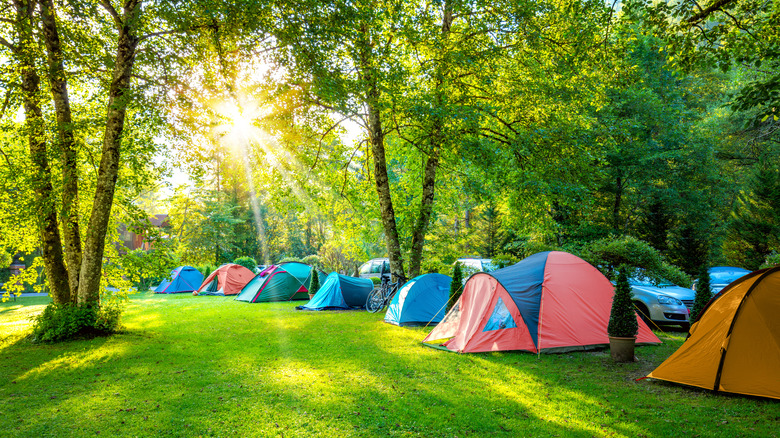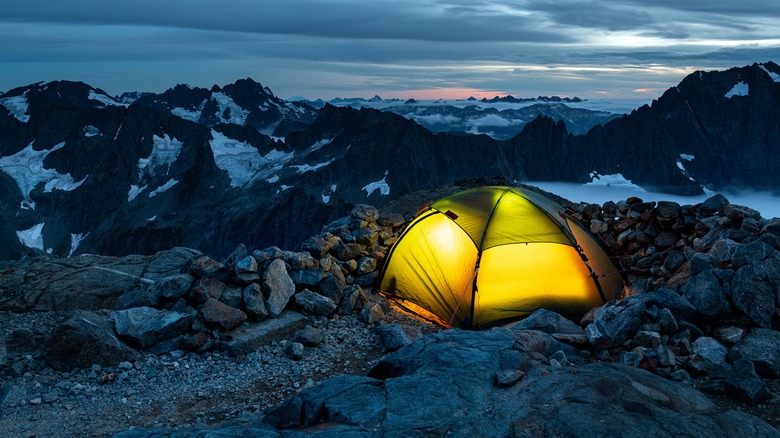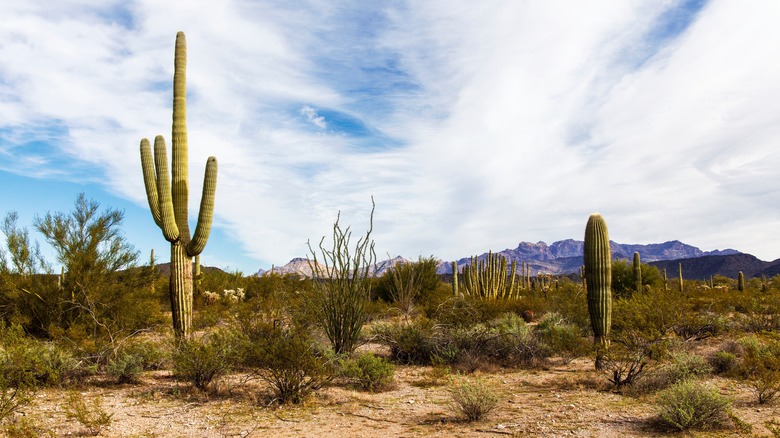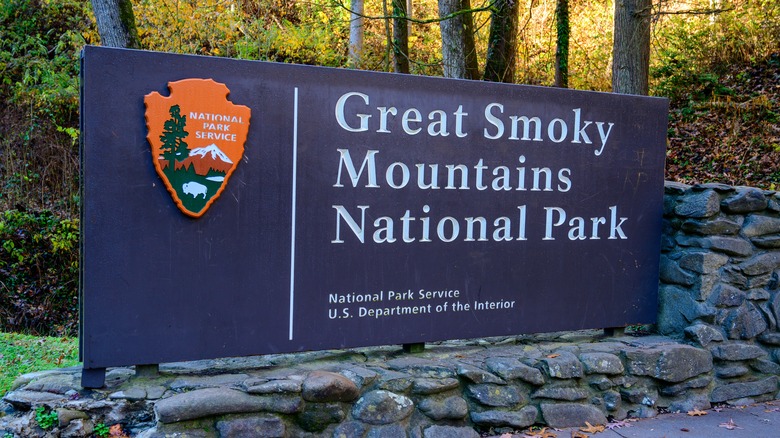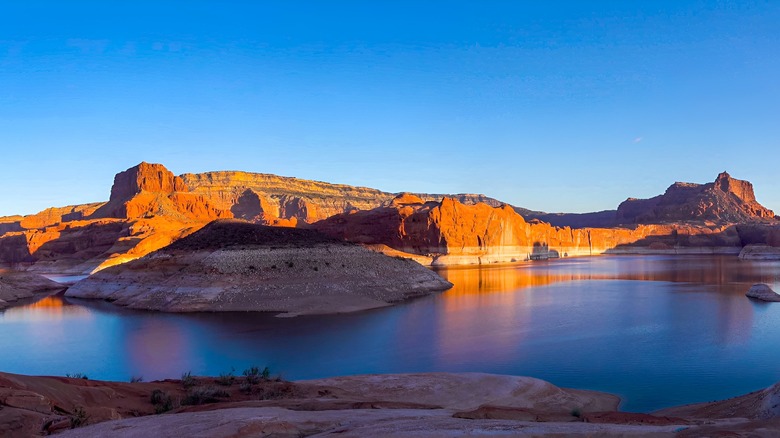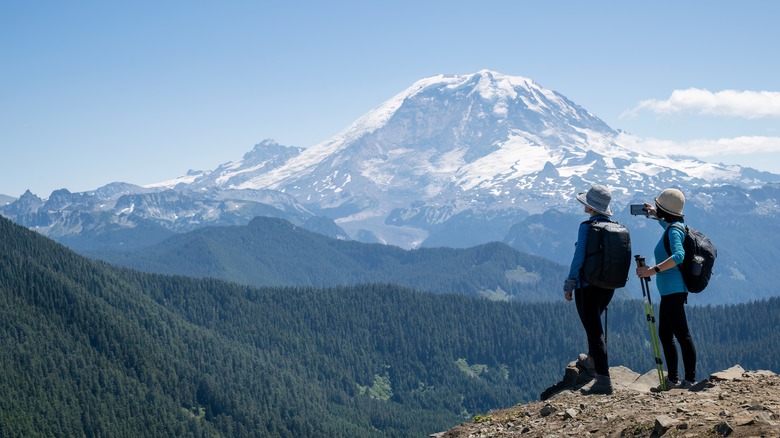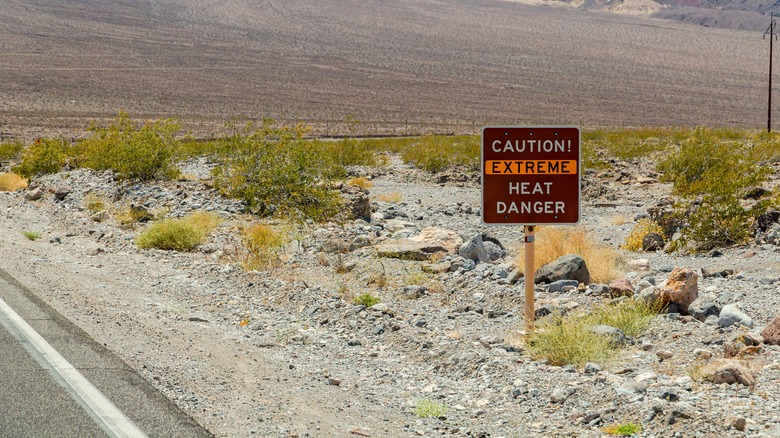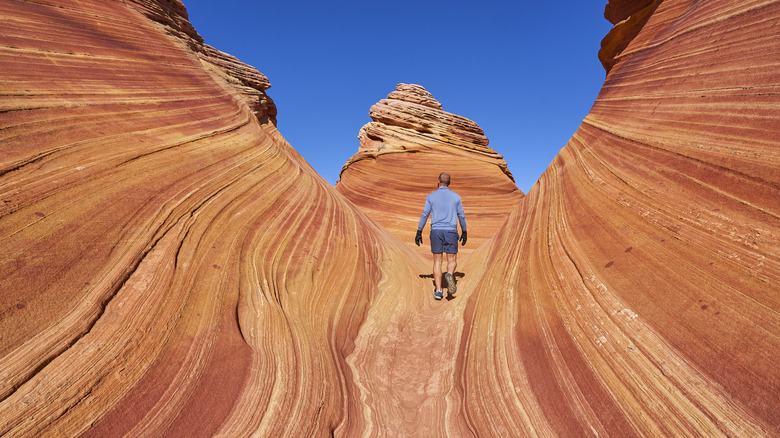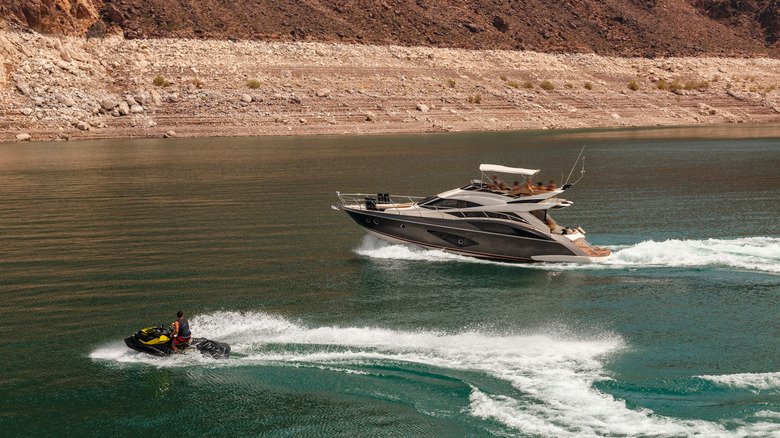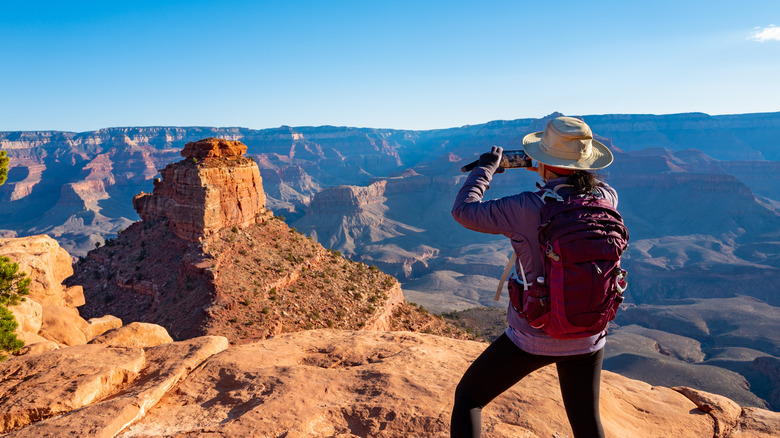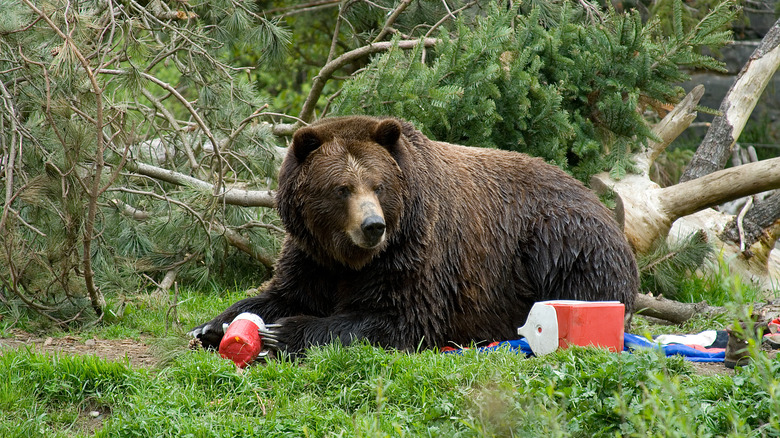The Most Dangerous US Campgrounds Ranked
Camping is one of the most enjoyable of all U.S. pastimes. Whether it's taking off to the mountains to catch some fall color, or trying to book a spot at one of the country's most-visited campsites, there is a place for every camper to enjoy. However, in spite of all the natural beauty one can behold, there are just some locations that are more hazardous than they appear.
While we would never recommend that you not camp somewhere, we still want to provide you with important information concerning the potential dangers you could face when camping at the spots on this upcoming list. There are definitely some natural hazards you'll need to watch out for if you ever camp at one of these sites, but most of the danger comes from fellow campers.
From canyon parks in Utah, drivers in the Great Smoky Mountains, and avalanches in the Cascade Range, the sites on this list offer potential dangers that are definitely cause for concern. We've ranked them from least to most dangerous, with the key factor being risk to human life. Here are 10 of the most dangerous U.S. campgrounds, ranked.
10. Expect cold and snow at Sahale Glacier
The fact that this section of the Cascade Pass requires a backcountry camping permit from the park rangers at North Cascades National Park should give you an idea of how difficult this trail can be. While it is incredibly well maintained, this is not a hike that beginners will want to take. It is an overnight hike, meaning to complete it will require camping along the Sahale Glacier, which makes up a significant portion of this section of the Cascade Pass.
Regardless of the time of year you intend to hike and camp on the Sahale Glacier, you need to be aware of the potential dangers posed by the surrounding environment. This is not one of the more popular places to hike and camp, so you won't be dealing with too much human interaction. However, the elements are such that you could find yourself in a dangerous situation. We're talking, of course, about avalanches.
The mountains of northern Washington are among the most beautiful in the world, but they are prone to avalanches. Sahale Glacier is no exception. So, unless you are prepared to survive in a snow storm, you are not ready for this hike. Being stuck in the snow without the right equipment is a recipe for disaster.
9. Drug trafficking is the real danger at Organ Pipe Cactus National Monument
Located in the desolation of the Arizona desert, it is not the landscape or fellow campers that make Organ Pipe Cactus National Monument such a dangerous place to camp. Owing to its location along the southern border of the United States, this park has been subject to numerous incidents of drug cartels and human traffickers utilizing its remote location as a place from which to smuggle drugs and people.
According to the National Park Service, reports of interactions involving both drug and human smuggling have been going on since the late 1980s. In 2002, Park Ranger Kris Eggle was shot while pursuing cartel members, causing 70% of the park to close for over a decade, per High Country News. While these issues seem to have calmed down in recent years, there is still cause for concern when camping there.
As it is a desert, campers should be advised of the potential risk of heatstroke and exhaustion when camping. There are also canyons and other rock formations that can pose difficulty for those inexperienced with climbing. Overall, Organ Pipe Cactus National Monument is not the safest of places to camp, though it is very beautiful for those who love desert landscapes.
8. Beware of drivers at Great Smoky Mountains National Park
If you were to look up a list of the most dangerous U.S. National Parks, you'd definitely find Great Smoky Mountains National Park. Split between North Carolina and Tennessee, the park is one of the most popular and visited of the U.S. National Parks. However, the Great Smoky Mountains has been host to 92 deaths over the last 15 years. According to Wildland Trekking, most of them were due to auto accidents.
Seeing as over 380 miles of road crisscrosses the interior of the park, there have been a fair number of car crashes over the years — 37 of which have been fatal. Though the roads themselves are well maintained, there are lots of bends and not many places to pull over if needed. As such, if one takes a turn too quickly, especially with a camper attached, there could be danger.
Disappearances and forest fires are also not as uncommon as one would like to believe. The park has seen more than its fair share of campers go off for an afternoon hike only never to be found again. And forest fires in the park are often caused by careless fire maintenance from the campgrounds. So, while you are more than welcome to join in the millions who camp at Great Smoky Mountains every year, you will need to be incredibly cautious when you go.
7. Glen Canyon has steep cliffs and bad boaters
One of the things people love most about camping is experiencing nature for themselves. They can bike, hike, and even climb and swim at some of the locations on this list. One of the most popular places to do the latter is Glen Canyon National Recreation Area in Utah. You'll need to keep your head about you while you're here, because some of the recreation offered at the park could turn dangerous.
Cliff jumping is one such issue. While it is a lot of fun to jump from a cliff into the deep waters below, failing to do so carefully is going to lead to issues. Hitting the cliffside on your way down could cause serious injury, and even death. Plus, slamming into the water hard at the wrong angle could lead to the same results.
Then there is the boating on Glen Canyon's Lake Powell. Though we'd like to think everyone has brushed up on their boat driving skills, the fact is that a good portion of the people who go out boating are not the best at it. As such, boating accidents are extremely common on Lake Powell. If a boat is going fast enough into another boat, there is going to be trouble. Overall, however, if you keep your head, Glen Canyon and Lake Powell, are perfectly safe, and stunningly beautiful places to visit.
6. Mount Rainier is an active volcano
Mount Rainier in Washington is an active volcano! Do we need to say more than this? While it hasn't erupted since 1450, the fact remains that the volcano could, in fact, erupt at any time. This should not stop you from taking in its splendor, and it certainly hasn't stopped folks from living near the base of the mountain. However, as long as you go to the mountain with this fact in mind, you should be totally safe to visit for a few hours.
Volcanic activity is not the only thing that makes Mount Rainier dangerous. The terrain, as well as the climate, can get very tricky. Because of its high elevation, the mountain is prone to drastic changes in weather that can occur on a dime. As such, campers need to be prepared for sunshine to turn to cold clouds and rain in next to no time.
There is also the possibility of earthquakes and avalanches at Mount Rainier. More than a few of the 425 people to die on Mount Rainier have become trapped and perished as a result of getting caught in an avalanche, per National Parks Traveler. While you can't predict dramatic weather events, proper preparedness should always be taken when camping in places like Mount Rainier.
5. Don't disappear in Death Valley
Honestly, how could California's Death Valley not make it onto this list?! Death is in the name! One of, if not the, hottest places on the planet, no one was being cheeky when they named this stretch of desert Death Valley. It's a land of extremes. With next to no rainfall, and blazing temperatures during the day anyone caught camping in Death Valley without the right equipment is going to be in trouble.
Despite Death Valley's three million acres of preserved wilderness making it one of the greatest places to see the night sky, visitors need to be careful when it comes to sun exposure and hydration. Even a little time out in the blazing heat of the place could potentially cause heatstroke and exhaustion. Not only that, but there is reason to believe that there is something darker in Death Valley.
Disappearances are not uncommon. There was a well-documented case of a visiting German family vanishing in 1996, and, more recently, a Nevada resident and veteran went missing in 2022. According to the Review Journal, his body has yet to be found. So, if camping in Death Valley is on your bucket list, always go with someone else, stick close together and near major landmarks. You don't want to find yourself lost in the middle of the desert.
4. Explore The Wave, with caution
Whenever someone goes camping, there is a whole lot more they want to do than just sit around in a tent all day long. They want to explore and find new things to love about the nature they adore being in. This is why the Wave in Arizona offers such a unique camping experience. While campers cannot camp on the Wave itself, this singularly unique rock formation is, as its name suggests, like a rolling wave of multicolored sandstone.
In order to keep the Wave from becoming too degraded, only 64 people per day are allowed to visit. As such, how much a person is able to accomplish as far as hiking goes is severely limited. This is actually an interesting safety measure, as the Wave has caused its fair share of health-related issues.
As it is sandstone in the middle of the Arizona desert, it is very disorienting to look at these mesmerizing colors. Many people have gotten lost while hiking in the Wave, and even more have suffered heart attacks caused by heatstroke. So, this is one destination only to visit if you are properly prepared to take on its elements.
3. Keep watch for boats and bad behavior at Lake Mead
Lake Mead National Recreation Area is one of the most highly trafficked of all camping destinations in the United States. As such, the biggest dangers one will face while camping is not the environment, as is the case with places like Death Valley and the Wave. No, the biggest dangers one will face while camping at Lake Mead are other campers.
Not that those camping at Lake Mead are out to get anyone, but the Las Vegas Review-Journal has reported a rise in the reporting of dangerous activity at the lake. There have been many arrests made over drunk and disorderly behavior, violent assault, vandalization of property, as well as driving both cars and boats while under the influence. The latter have had pretty serious ramifications.
There have been multiple instances of drowning deaths at Lake Mead that are believed to have been caused by either boating accidents or swimming while under the influence of alcohol. So, while this type of behavior might not be something you do yourself, camping at a place that seems to harbor this type of disruptive behavior might not be in your best interest.
2. The Grand Canyon earns its reputation for danger
The Grand Canyon, while absolutely stunning in its scenery and scope, has nevertheless maintained a reputation as being an exceedingly dangerous place to visit or go camping. Not only are there dangerous desert snakes that could come slithering into your tent at night, but the weather and terrain are also things that need to be monitored.
If you plan on hiking the canyon during your stay, you need to be aware of the temperature difference between the top and bottom of the canyon. The bottom is going to be far hotter than the top. As such, you need to prepare with adequate sun protection and hydration, while also being aware of your own limits. Dehydration and heatstroke are big concerns when camping in the Grand Canyon.
Obviously, these issues can be prevented with some good forethought and planning. Make sure you have plenty of sun protection, such as hats, sunscreen, and cooling towels, and plenty of water to keep you hydrated. Proper footwear is also key for hiking those trails. The last thing you want to do is fall.
1. Glacier National Park is bear country
Though stunningly beautiful in its own right, the fact that Glacier National Park sees two to three deaths annually is the reason we consider it to be the most dangerous place to go camping. It is the landscape and wildlife, more than anything else, that poses the most danger when camping here. Avalanches, freezing temperatures, and the unforgiving terrain are probably what is most likely to cause campers harm. However, there is also something more grizzly to be concerned about.
If campers happen to be spending their time on Huckleberry Mountain, they are very likely going to run into some Grizzly bears. These bears are among the most dangerous in existence, and should absolutely never be approached. As such, you will need to take precautions, especially with personal protection and food storage, if you want to keep these bears away.
As was said at the beginning, there is nothing that should keep you from visiting all of the campgrounds on this list. If you are aware of the dangers, you will do better to avoid them. So if you are prepared and keep a level head, there is nothing to stop you from having the best time while out in the wilderness.
